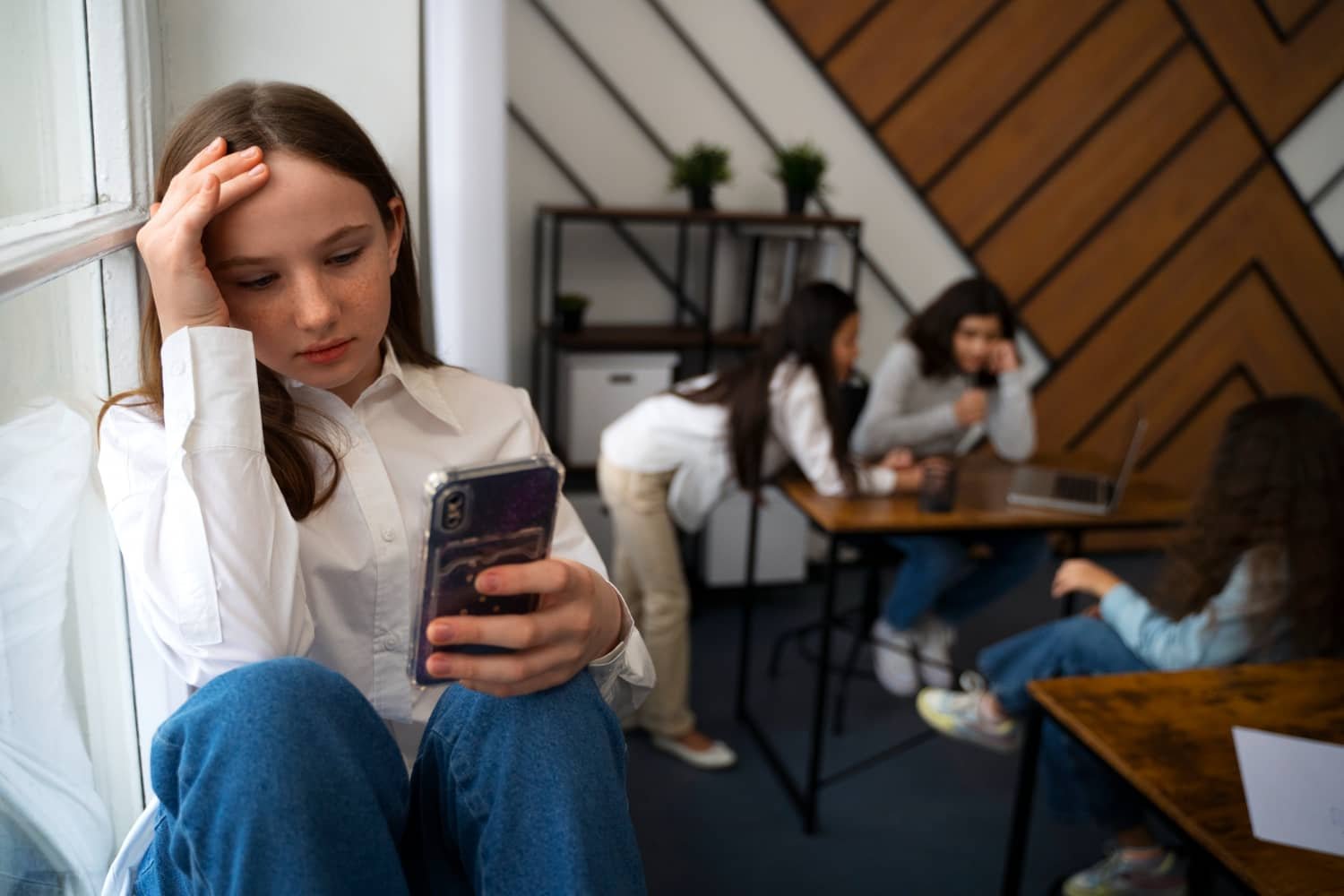Listen to this Article
What is Social Anxiety Disorder?
Social Anxiety Disorder (SAD), also known as social phobia, is a chronic mental health condition characterized by intense fear or anxiety about social situations where the individual may be scrutinized, judged, or embarrassed. According to the Diagnostic and Statistical Manual of Mental Disorders, Fifth Edition (DSM-5), SAD is classified under Anxiety Disorders and requires symptoms to persist for ≥6 months, causing significant distress or functional impairment (American Psychiatric Association, 2013). The ICD-11 defines it similarly, emphasizing avoidance of social interactions and fear of negative evaluation (World Health Organization, 2022).
Symptoms of Social Anxiety Disorder
DSM-5 criteria for SAD include:

- Marked fear/anxiety about social situations involving possible scrutiny (e.g., conversations, public speaking, eating in front of others).
- Avoidance of feared situations or endurance with intense distress.
- Physical symptoms (e.g., blushing, trembling, sweating, nausea).
- Persistent fear lasting ≥6 months, disproportionate to the actual threat.
- Impairment in social, occupational, or other important areas.
Associated Features:
- Excessive self-consciousness or fear of appearing anxious.
- Post-event rumination (overanalyzing past social interactions).
- Comorbid conditions (e.g., depression, avoidant personality disorder) (Kaplan & Sadock’s Synopsis of Psychiatry).
Types of Social Anxiety Disorder
- Generalized Social Anxiety:
- Fear of most social interactions (e.g., meeting strangers, attending parties).
- Performance-Only Social Anxiety:
- Anxiety restricted to specific situations (e.g., public speaking, performing).
- Avoidant Personality Disorder (AvPD):
- Overlaps with SAD but involves pervasive avoidance of social relationships and feelings of inadequacy (DSM-5).
Causes of Social Anxiety Disorder
SAD develops from a mix of biological, psychological, and environmental factors:
- Biological:
- Genetic predisposition (heritability ~30–40%).
- Hyperactivity in the amygdala (fear processing) and prefrontal cortex (social evaluation).
- Dysregulation of serotonin and dopamine pathways (Oxford Textbook of Psychiatry).
- Psychological:
- Cognitive biases (e.g., overestimating negative judgment, catastrophizing).
- Childhood temperament (e.g., behavioral inhibition).
- Environmental:
- Traumatic social experiences (e.g., bullying, humiliation).
- Overprotective or critical parenting styles (Maudsley Guidelines).
Diagnosing Social Anxiety Disorder
- Clinical Interview:
- Assess fear triggers, avoidance patterns, and symptom duration (DSM-5/ICD-11).
- Self-Report Scales:
- Liebowitz Social Anxiety Scale (LSAS): Measures fear and avoidance across 24 social situations.
- Social Phobia Inventory (SPIN): Screens severity of symptoms.
- Differential Diagnosis:
- Rule out panic disorder, generalized anxiety disorder (GAD), autism spectrum disorder (ASD), or medical conditions (e.g., hyperthyroidism).
Treatment for Social Anxiety Disorder
1. Psychotherapy:
- Cognitive Behavioral Therapy (CBT):
- Exposure Therapy: Gradual confrontation with feared social situations.
- Cognitive Restructuring: Challenges irrational beliefs (e.g., “Everyone will laugh at me”).
- Social Skills Training: Improves communication and assertiveness.
- Acceptance and Commitment Therapy (ACT): Reduces avoidance by fostering psychological flexibility.
2. Pharmacotherapy:
- First-Line:
- SSRIs (e.g., sertraline, paroxetine): Reduce anxiety and improve social functioning.
- SNRIs (e.g., venlafaxine): For non-responders to SSRIs.
- Short-Term:
- Benzodiazepines (e.g., clonazepam): Reserved for acute anxiety (limited use due to dependency risks).
- Beta-Blockers (e.g., propranolol): Manage physical symptoms (e.g., trembling) in performance-specific SAD (Maudsley Prescribing Guidelines).
3. Lifestyle and Supportive Interventions:
- Support Groups: Peer-led settings to practice social skills.
- Mindfulness/Relaxation Techniques: Reduces physiological arousal (e.g., deep breathing, progressive muscle relaxation).
- Exercise: Regular physical activity lowers overall anxiety levels.
Social anxiety symptoms, DSM-5 social phobia, CBT for social anxiety, social anxiety treatment options, ICD-11 social anxiety disorder, fear of public speaking, sertraline for social anxiety





